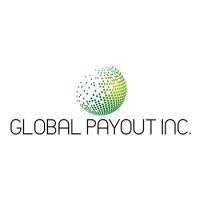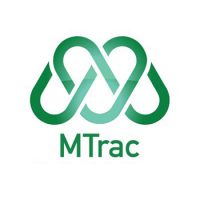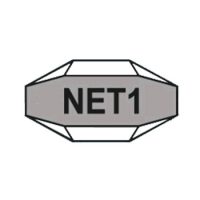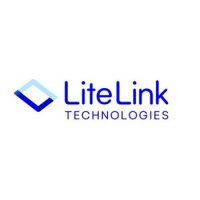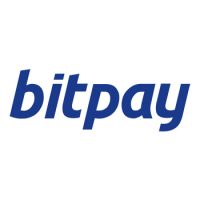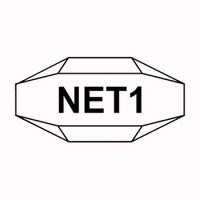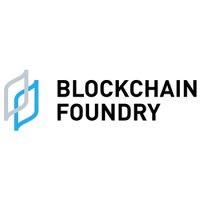Blockchain
OneConnect Financial Technology and Singapore Management University announce key findings from joint research on potential for quantum computing to resolve blockchain trilemma

OneConnect Financial Technology Co., Ltd. (OneConnect) the leading technology-as-a-service platform provider and an associate of Ping An Insurance Group, and Singapore Management University (SMU) today announced the key findings from a jointly conducted research on the potential of quantum computing to augment blockchain technology for businesses. The research report has been vetted by the Blockchain Association Singapore (BAS) and the findings were shared at the BAS webinar titled “Enterprise Blockchain in the New Decade” earlier today, moderated by Ms Tan Bin Ru, Co-Chairwoman of BAS, who is also CEO (SEA) of OneConnect Financial Technology.
The findings from this research follow an earlier Memorandum of Understanding (MOU) between OneConnect and SMU in 2019 to develop a Proof of Concept (POC) to investigate the characteristics of quantum computing for distributed ledger technologies (DLTs). Co-led by Associate Professor Paul Griffin from SMU School of Computing and Information Systems, the report focused on studying quantum algorithms that could augment blockchain technology in the area of robust large-scale consensus.
While reviewing various types of consensus mechanisms and the suitability of quantum computing in business, the research has shown that the inherent constraints faced by classical DLTs known as the “blockchain trilemma”, or the notion of improving all three fundamental attributes of blockchain – speed, security and size – at once could be broken by quantum technologies, thus increasing potential business usage. For current blockchains, a longer time is required to reach a consensus for highly secure DLTs, and increasing the speed of consensus leads to lower security.
The result findings from the research project include:
- Quantum and classical consensus take a similar number of rounds to agree on the same value, meaning that with a quantum internet, big data such as social media and IoT information could be used for consensus and not be limited to the few hundreds of financial transactions of current blockchains. This would likely benefit many areas of financing including trade finance and the under-banked.
- Quantum consensus has more variation than classical and can take longer or shorter times to achieve consensus, potentially speeding up consensus if the shorter times are engineered to be selected.
- Real quantum computers need careful configuration and noise mitigation, and this will take time to become commercially useful. Furthermore, there is much more work needed to connect quantum computers to quantum networks.
Ms Tan Bin Ru shared, “We are excited to be announcing the results and insights gathered from this joint research over the last one year – it has indeed been a remarkable journey and a significant milestone that we are sharing with SMU today. Collaborations like these will allow us to better understand and lay the groundwork for the potential of blockchain technology that can be applied to businesses in the future, such as improving financing and the under-banked woes. We look forward to continuing long-term partnerships with educational institutes like SMU to potentially expand its usefulness in industry applications.”
Associate Professor Paul Griffin, a speaker at the BAS webinar, shared, “It has been a wonderful journey with OneConnect to work on this exciting future-oriented research. The potential for quantum computing is just beginning to be explored and this project has helped to move this forward in a relevant area for the industry. SMU would like to thank all the people involved and look forward to continuing this and other research with OneConnect in the future.”
Following the joint research, OneConnect and SMU will continue to forge partnerships in the areas of innovation and building talents for the digital economy.
Blockchain
Blocks & Headlines: Today in Blockchain – May 16, 2025

A Pivotal Moment for Blockchain’s Many Frontiers
Today’s briefing arrives at a crossroads in blockchain’s evolution. From AI-driven Layer-1 grant programs to gamified resets in Web3, from supply-chain trust revolutions to exchange-driven token incentives, and high-stakes regulatory leadership shifts, the industry is charting new territory on multiple fronts. As builders, investors, and policymakers navigate this shifting terrain, five stories stand out for their potential to reshape blockchain’s trajectory:
-
Lightchain Protocol AI unveils a $150,000 developer grant program to onboard top builders in AI × blockchain.
-
Blockchain gaming experiences its lowest engagement of 2025, signaling a sector reset toward sustainability.
-
Norwegian Seafood Council research highlights blockchain’s trust-building power in global supply chains.
-
MEXC Exchange announces the Einstein (EIN) listing on July 20, 2025, buoyed by a $50 million rewards event.
-
Summer Mersinger, a US CFTC commissioner, is tapped as CEO of the Blockchain Association, marking a pivotal regulatory turn.
In this op-ed–style briefing, we’ll unpack each development, explore its implications for blockchain, cryptocurrency, Web3, DeFi, and NFTs, and assess how these narratives intersect to define today’s momentum.
1. Lightchain Protocol AI’s $150K Grant: Catalyzing Decentralized Intelligence
What happened: On May 15, 2025, Lightchain Protocol AI—a Layer-1 blockchain optimized for AI workloads—launched its Developer Grant & Ecosystem Incentive Program, pledging up to $150,000 in total funding to on-board teams building dApps, explorers, wallets, analytics dashboards, DeFi protocols, NFT platforms, and AI-powered modules on its network. Grants are milestone-based (up to $5,000 per milestone), accompanied by technical support, co-marketing, and ecosystem visibility. Source: Bitcoin News
Why it matters: Lightchain’s move underscores the growing fusion of AI and blockchain. By allocating resources to builders at the intersection of these technologies, the protocol signals that the next wave of innovation will hinge on intelligent smart contracts, federated learning coordination, and on-chain decision-making. For developers, this grant lowers barriers to entry and emphasizes sustainable, value-driven growth over token speculation.
> “We’re seeking impactful projects that align with Lightchain AI’s goal of bridging AI and blockchain—everything from AI prediction markets to compute marketplaces.” > — Lightchain Protocol AI Core Team
Implications:
-
DeFi & NFTs: Expect AI-augmented lending protocols and NFT platforms with dynamic metadata driven by on-chain models.
-
Ecosystem Growth: Lightchain’s aggressive grant strategy may spur competitors (e.g., Ethereum layer-2s) to bolster their own builder incentives.
-
Governance & Sustainability: The milestone-based approach aligns funding with tangible progress, a model DeFi DAOs may increasingly adopt for resource allocation.
Source: Bitcoin News
2. Blockchain Gaming’s 2025 Low: A “Reset” Toward Quality
What happened: According to Crypto.news, blockchain gaming saw daily active wallets dip to 4.8 million in April 2025—a 10% month-over-month decline and the lowest point of the year for Web3 gaming. Share of the DApp ecosystem for gaming fell to 21%, now tied with DeFi, while AI projects surged to 16% of on-chain activity. Funding also plunged nearly 70% from March to $21 million in April, though Arbitrum Gaming Ventures deployed $10 million from its $200 million fund to support titles like Wildcard, XAI Network, and Proof of Play. Source: Crypto.news
> “Capital is harder to secure, but that’s not necessarily bad. Weak projects are falling away, and funds are flowing into builders laying the groundwork for the next generation of blockchain games.” > — Sara Gherghelas, DappRadar Analyst
Why it matters: The downturn reflects a market recalibration from token-centric models toward user engagement, game mechanics, and interoperability—key for mainstream adoption. High-profile missteps (e.g., Square Enix shelving Symbiogenesis, Sega’s experimental launch of KAI: Battle of Three Kingdoms) contrast with enduring partnerships like Ubisoft + Immutable’s Might & Magic card game.
Implications:
-
DeFi and Gaming Convergence: As DeFi’s share remains steady, expect crossover innovations (e.g., on-chain staking integrated into gameplay).
-
Investor Focus: Sustainable tokenomics over ‘yin-yang’ hype; capital will favor projects with robust retention metrics and revenue models.
-
NFT Utility: Gaming’s reset may accelerate evolution of NFTs beyond collectibles into dynamic, utility-driven assets.
Source: Crypto.news
3. Deepening Trust in Seafood with Blockchain Transparency
What happened: Perishable News reported on May 15, 2025, that the Norwegian Seafood Council found 89% of consumers desire more information on seafood sourcing. Producers are piloting decentralized blockchain solutions to trace products “sea to shop floor,” sharing immutable data on species, harvest location, handling, and quality checks to reassure ethically conscious buyers. Source: Perishable News
Why it matters: While most blockchain discourse orbits finance and gaming, supply-chain applications represent a mass-market use case for Web3. Immutable provenance data combats fraud, illegal fishing, and mislabelling—an urgent concern as global seafood consumption climbs.
Implications:
-
Consumer Engagement: Brands adopting on-chain traceability can premium-price products by verifying sustainability standards, fair labor practices, and environmental impact.
-
DeFi Integration: Tokenized incentives could reward ethical producers or create staking mechanisms for supply-chain stakeholders.
-
Broader Web3 Adoption: Success in seafood may catalyze blockchain tracking in agriculture, pharmaceuticals, and luxury goods.
Source: Perishable News
4. MEXC’s Einstein (EIN) Listing & $50 Million Rewards Event
What happened: PR Newswire announced on May 16, 2025, that MEXC, a leading global crypto exchange, will list the Einstein (EIN) token on July 20, 2025 (UTC). To celebrate, MEXC has launched a $50 million EIN rewards event, offering incentives through trading competitions, referral bonuses, staking pools, and community tasks. Source: PR Newswire
Why it matters: Large-scale rewards events can drive short-term volume spikes and social engagement, but they also test community loyalty and tokenomics viability. EIN’s positioning as a “science-minded” utility token in educational and research partnerships adds thematic depth to what might otherwise be a routine exchange listing.
Implications:
-
Trading & Community Growth: Expect surges in trading volume, potentially setting new ATHs for MEXC’s platform metrics.
-
DeFi Crossplay: EIN holders may see integration into DeFi protocols for governance, liquidity mining, and educational grants.
-
Regulatory Watch: Large-scale token events continue to attract scrutiny over securities classifications and promotional compliance.
Source: PR Newswire
5. Summer Mersinger Becomes CEO of the Blockchain Association
What happened: Gadgets360 reported that on May 14, 2025, the Blockchain Association confirmed that Summer Mersinger, currently a commissioner at the US Commodity Futures Trading Commission (CFTC), will step down on May 30 and begin as the Association’s CEO on June 2. Mersinger has championed balanced, consumer-focused digital asset rules and will spearhead advocacy for fit-for-purpose legislation alongside US regulators. Source: Gadgets360
> “Summer’s knowledge of how elected officials think through complex questions will be vital as we await next steps on stablecoin and market structure bills.” > — Blockchain Association
Why it matters: The appointment bridges regulatory expertise and industry advocacy at a moment when Congress is eyeing stablecoin frameworks and broader crypto oversight. Mersinger’s shift signals a blurring of lines between government and industry, with potential to accelerate law-making and foster public-private collaboration.
Implications:
-
Policy Acceleration: Expect renewed momentum on stablecoin legislation, DeFi disclosures, and market-structure rules by August 2025, per administration timelines.
-
Industry Confidence: Firms may feel emboldened to innovate under clearer regulatory signals, supporting growth in DeFi, NFT marketplaces, and tokenized asset offerings.
-
Global Alignment: US-led regulatory frameworks often influence EU and APAC regimes—this leadership change could ripple through the international policy landscape.
Source: Gadgets360
Conclusion: Five Threads Weaving Tomorrow’s Blockchain Fabric
Today’s headlines paint a multifaceted portrait of blockchain’s ongoing maturation:
-
Ecosystem Incentives: Grant programs like Lightchain’s signal a builder-first ethos, turbocharging AI × blockchain synergy.
-
Quality Over Hype: Gaming’s dip reflects a necessary market reset, steering capital to sustainable, engagement-driven projects.
-
Real-World Utility: Supply-chain transparency demonstrates blockchain’s power beyond finance, enhancing consumer trust.
-
Tokenomics in Motion: Exchange listings and rewards events underscore the ever-evolving interplay between liquidity, community, and utility.
-
Regulatory Convergence: Leadership moves like Mersinger’s appointment highlight the tightening feedback loop between policymakers and the Web3 sector.
As blockchain, cryptocurrency, Web3, DeFi, and NFTs continue to intersect, today’s developments underscore a pivotal shift: the industry is moving from speculative frontiers to pragmatic, real-world applications—backed by funding, governance, and policy frameworks that prioritize longevity and trust. Keep these threads in mind as we watch the next chapters unfold.
The post Blocks & Headlines: Today in Blockchain – May 16, 2025 appeared first on News, Events, Advertising Options.
Blockchain
Saudi Arabia Loan Aggregator Market Report 2025: Retail Digital Payments Hit 70% as Tech Adoption Transforms Saudi Financial Services – Competition, Forecast & Opportunities to 2030
Saudi Arabian Loan Aggregator Market
Blockchain
Mercurity Fintech’s Subsidiary Grows Cross-Border Business Advisory Services with New Asia-Pacific Healthcare Client Engagement
-

 Blockchain Press Releases4 days ago
Blockchain Press Releases4 days agoBullish partners with the Gibraltar Government and GFSC to pioneer world’s first crypto clearing regulation
-

 Blockchain5 days ago
Blockchain5 days agoBlocks & Headlines: Today in Blockchain – May 12, 2025 | Rootstock, Zimbabwe Carbon Registry, Fastex, 21Shares, The Blockchain Group
-

 Blockchain Press Releases5 days ago
Blockchain Press Releases5 days agoBybit Introduces BOB to P2P: Bolivian Traders Can Now Buy, Sell in Local Currency and Earn Commissions
-

 Blockchain Press Releases2 days ago
Blockchain Press Releases2 days agoFintica AI and Mima Wallet Announce Strategic Partnership and Launch Joint Venture, Fintica Crypto Ltd
-

 Blockchain2 days ago
Blockchain2 days agoBlocks & Headlines: Today in Blockchain – May 15, 2025 (BTC’s Push, Pi Network Fund, Stablecoin Levers, JPM Pilot, OKX × Man City)
-

 Blockchain2 days ago
Blockchain2 days agoBDM Digital Initiates Promising Dialogue with Stanford Law School in Pursuit of Strategic Partnerships in Silicon Valley
-

 Blockchain Press Releases4 days ago
Blockchain Press Releases4 days agoIndependent Audit from Hacken Confirms MEXC’s Strong Security Standards
-
Blockchain2 days ago
Wen Acquisition Corp Announces the Pricing of $261,000,000 Initial Public Offering

















